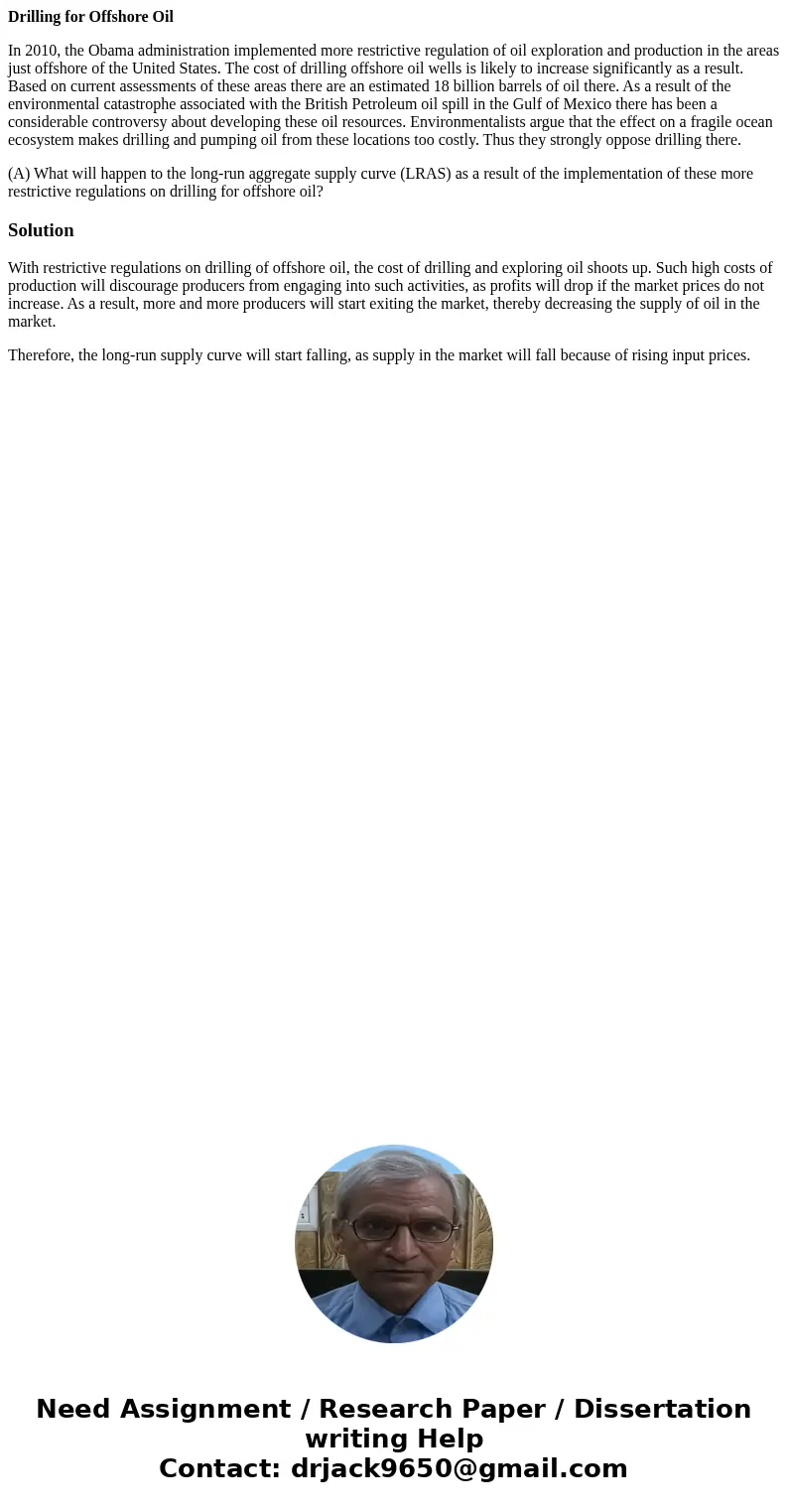Drilling for Offshore Oil In 2010 the Obama administration i
Drilling for Offshore Oil
In 2010, the Obama administration implemented more restrictive regulation of oil exploration and production in the areas just offshore of the United States. The cost of drilling offshore oil wells is likely to increase significantly as a result. Based on current assessments of these areas there are an estimated 18 billion barrels of oil there. As a result of the environmental catastrophe associated with the British Petroleum oil spill in the Gulf of Mexico there has been a considerable controversy about developing these oil resources. Environmentalists argue that the effect on a fragile ocean ecosystem makes drilling and pumping oil from these locations too costly. Thus they strongly oppose drilling there.
(A) What will happen to the long-run aggregate supply curve (LRAS) as a result of the implementation of these more restrictive regulations on drilling for offshore oil?
Solution
With restrictive regulations on drilling of offshore oil, the cost of drilling and exploring oil shoots up. Such high costs of production will discourage producers from engaging into such activities, as profits will drop if the market prices do not increase. As a result, more and more producers will start exiting the market, thereby decreasing the supply of oil in the market.
Therefore, the long-run supply curve will start falling, as supply in the market will fall because of rising input prices.

 Homework Sourse
Homework Sourse